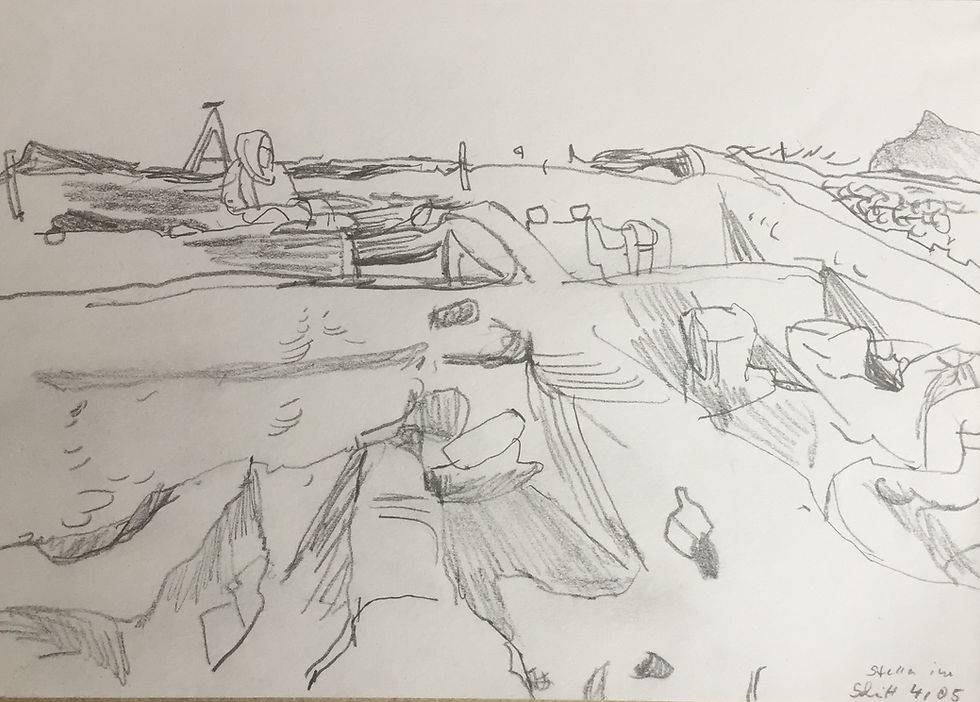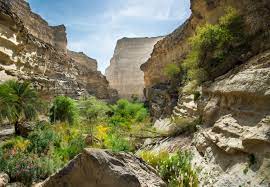I first met Stella while working for MOLA and while we never got to work together I had often heard from people that if I were interested in South Asian archaeology that she was the one to go to. By the time I got round to stalking her, she had already left the craziness of commercial archaeology in the hopes of pursuing the life of an academic, researching the topic close to both of our hearts; South Asian archaeology. Luckily she was nice enough to meet me out of work hours to listen to my endless chatter and answer some questions about the time she worked in Balochistan.
Stella was born in Germany but spent part of her childhood, the years 7-13, in Mumbai, India. This early experience coupled with the further 3 months spent travelling the country at age 19 may have first sparked the interest in the culture and history of the Indian Subcontinent. Places like Varanasi especially made an impact. Varanasi (also called Benaras or Kashi) is a city in the state of Uttar Pradesh and is a city of incredible religious significance in Hinduism and Jainism. It attracts more than a million pilgrims each year, who walk the Panchakosi road and walk down to the numerous ghats (steps) by the river Ganga and bathe in its waters. There are hundreds of temples, among them some of the most important being Vishvanatha (dedicated to Shiva) and the Durga temple famed for the monkeys that inhabit the nearby trees. It is also a city famed as a hub of Hindu learning and teaching and to this day it contains several colleges and three universities, including the Banaras Hindu University. It also continues to be a centre for crafts such as carpet weaving, production of brassware and silk fabrics with ornate threadwork. All of this activity and culture attracts millions of foreign visitors on top of the pilgrims, both domestic and foreign.
When back in Berlin she heard Prof. Julia Hegewald from SOAS, London give a lecture reigniting her passion and interest in the archaeology of South Asia and inspiring her to study her MA at SOAS later on. Upon graduating, Stella went into the laborious and hectic world of commercial archaeology in London but always wanted to back to the South/Southeast Asia that she had visited and studied. After emailing various projects, thinking she would work somewhere like Cambodia, she got a reply from Ute Franke-Vogt from the German Archaeological Institute. The project was in Balochistan, Pakistan. Stella said ‘it was most amazing looking back and one of the best things she could have been a part of back then'.
She flew to the coastal city of Karachi first and then would be driven 400km from the bustle of the city to the area of the excavation. The long drive gave Stella a chance to see the changing and drastically different landscape of Balochistan. It was vast, arid, and mountainous but also incredibly beautiful in a way different to places she had been before. A special permit from the government was needed for foreigners to be allowed into this part of the country because of the sometimes volatile political situation. From 2004 – 2006, she would bounce between the various commercial archaeological companies in London and then spend 3 months in springtime in the arid and wondrous landscape of Balochistan. The German-Pakistani project ran from 2001-2007 after a previous survey conducted in Southern Baluchistan highlighted the 13m high tell as an area of archaeological interest. Excavations were conducted to look at the development of settlements in this area over time.

When there was time to spare, they would conduct archaeological surveys of the region and visit some of the region's well-known archaeological sites. This included the famed site of Mohenjo-Daro and other Indus Valley sites. Baluchistan (also spelled Balochistan) is a province on the western side of Pakistan and shares its western border with Iran and the north-western border with Afghanistan, connected to Pakistan via the Bolan Pass. Its terrain is a mixture of mountainous highlands, arid desert and flatland plains along the coast. The modern-day province is the largest province of Pakistan and yet is also the most sparsely populated. Though cities such as Quetta have followed the general global trend of growing as an urban centre it is still seen as traditionally being made up of villages, though these grow smaller as communities move to more urban centres. Though much of the terrain would make for harsh living conditions because of the lack of easy access to water the karez systems, manmade underground water tunnels, have helped sustain rural village life for centuries.
The borders with Afghanistan and Iran and the coast on to the Arabian Sea have meant that this region is a key gateway between the east and west throughout the centuries. There are numerous sites of archaeological sites of importance in Baluchistan, including the Neolithic site of Mehrgarh. There are also many, many sites that still await careful recording and excavation. This has been made more difficult since the devolution of responsibility for cultural heritage to the provincial governments. Baluchistan, because of lack of resources as well as the volatile political situation, has often been unable to look after its archaeology and sites and instead work with the Department of Antiquities in the neighbouring Sindh province. The modern-day province of Sindh is the location of the UNESCO heritage site Mohenjo-Daro, the ‘Mound of the Dead’. One of two sites, first discovered in 1922 by R.D. Banerji of the ASI (Archaeological Survey of India). It has been seen, along with the site of Harappa and later the site of Rakhigarhi, as a centre of the Indus Valley Civilisation. This area has been of great interest to the international archaeological community since the recognition of the Indus Valley sites in the early 20th century. This includes, but is not limited to, the British, the explorer Aurel Stein, the French Archaeological Mission and the German Archaeological Mission.
It was the project area itself, Sohr Damb/Nal that was particularly special to Stella. The experience was of course amazing but it was the people from the nearby village that made this experience especially memorable. The women in their amazing hand embroidered colourful traditional Baluchi clothes. The children would bring tea during the workday. The core project team would supervise around 20-30 workmen on the site, all of whom came from the local village. Because there were a fair number of female archaeologists working on the project some of the women from the same village would also come to the site to gossip. Though this would often have mixed results because of the differing languages. The best part of the day would sometimes be the afternoon when the tents were empty as everyone else had gone to rest. Conversations, good company and tea are solid components to many good memories and this is just as true on quiet afternoons in Baluchistan as it is anywhere else. On one occasion they were invited to the wedding of a daughter of a local Baluchi tribal chief. The experience was ‘dazzling’ with music and the vivid colours worn by the Baluch people. The whole village attended, including the people who had worked on the site for the project team. They fired guns and played the drums in an exhuberent celebration very different from most weddings in the West.
Unfortunately, the political situation in Pakistan, and especially Baluchistan, became especially fraught in the mid-late 2000s. The project could no longer continue in the way it had. As was the case for many international archaeological projects at this time. Stella has not been back to the country since but has continued working on and off in Kashmir and is now conducting doctoral research on the impact of climate change on the cultural heritage landscape of Ladakh. If she had a chance to go back to Pakistan one day she would especially like to visit the city of Peshawar. With the effort of the Pakistani government to open its country up to tourism perhaps there is hope in the future. However, with the escalating Coronavirus situation in South Asia, it looks more and more likely that we will have to wait for some years and pray that the countries will pull through these difficult times.






















Bình luận